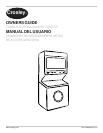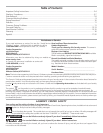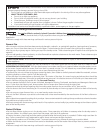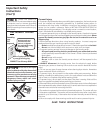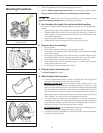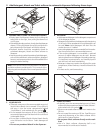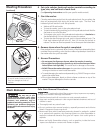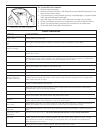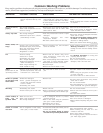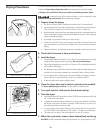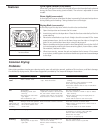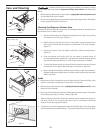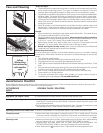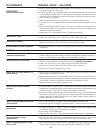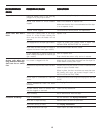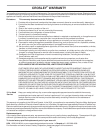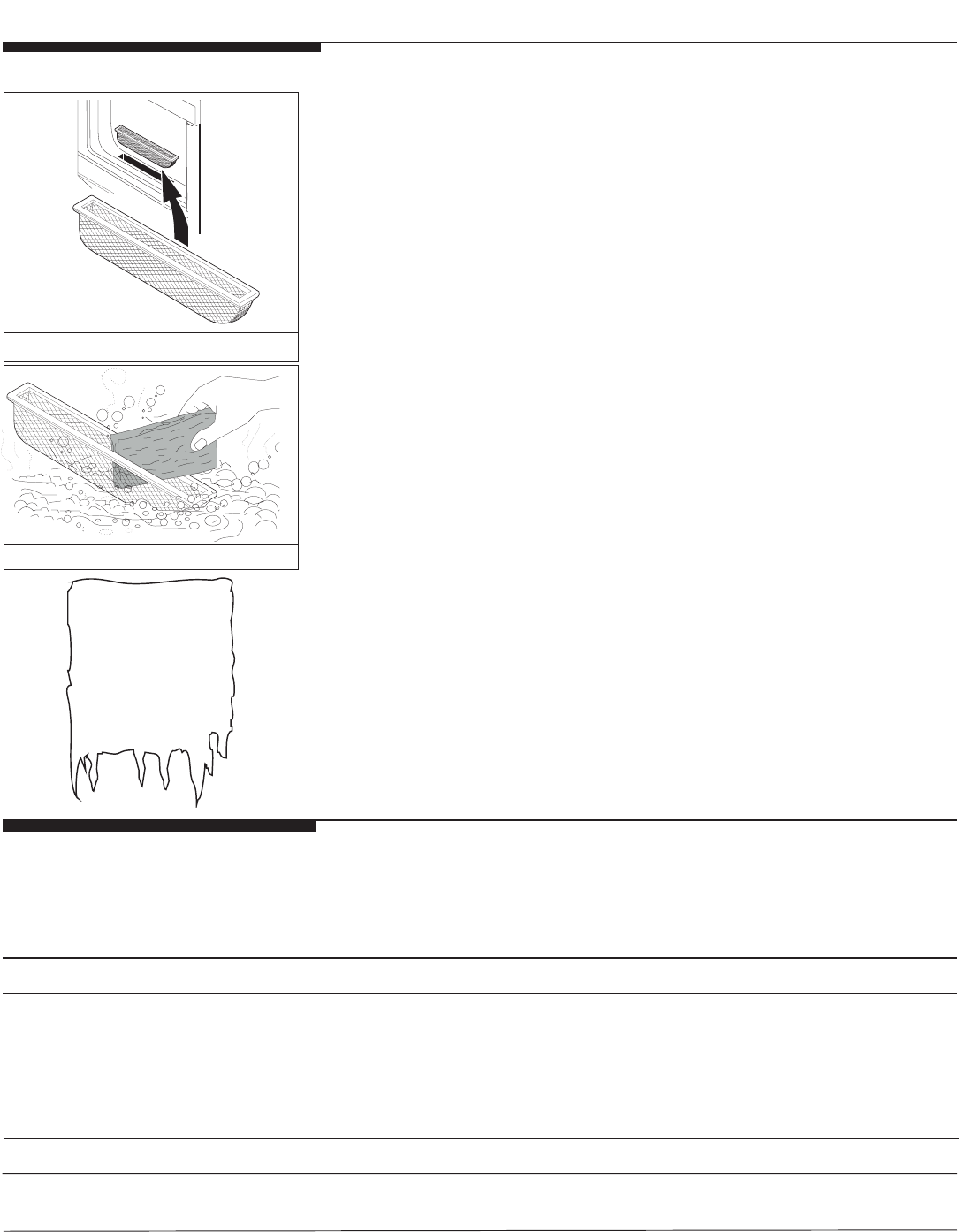
13
Follow
Winterizing
Instructions for
cold weather
care.
Avoid Service Checklist
Before calling for service, review this list. It may save both time and expense. The list includes common concerns that are not the
result of defective workmanship or materials in this laundry center.
NOISE
"Clicking" noise.
High pitch "jet engine" noise.
Rattling and clanking noise.
Squealing sound or hot rubber odor.
Thumping sound.
Vibrating noise.
• A normal sound made by the timer.
• A certain amount of motor whine is normal during the spin cycle.
• Foreign objects such as coins or safety pins may be in drum or pump. Stop washer and
check drum. If noise continues after washer is restarted, objects may be in pump. Call
your authorized servicer.
• Belt buckles and metal fasteners are hitting wash drum. To prevent unnecessary noise
and damage to drum, fasten fasteners and turn items inside out.
• Washer is overloaded. Do not overload washer. Stop washer and reduce load.
• Heavy wash loads may produce a thumping sound. This is usually normal. If sound
continues, washer is probably out of balance. Stop washer and redistribute wash load.
• Washer is not resting firmly on floor. Move washer so it rests firmly on floor. Adjust leveling
legs and tighten lock nuts.. See INSTALLATION INSTRUCTIONS for details.
• Shipping bolts and foam block have not been removed during installation. See
INSTALLATION INSTRUCTIONS for removing shipping bolts and foam block.
• Wash load unevenly distributed in drum. Stop washer and rearrange wash load.
POSSIBLE CAUSE / SOLUTION
OCCURRENCE
Care and Cleaning
Inside the Dryer
• Clean the dryer lint screen after every load. Lint build-up in the screen restricts air flow,
which causes longer drying times. The screen is located at the bottom of the door
opening. Remove by pulling straight up. Remove the lint and replace the screen.
• Occasionally a waxy build-up may form on the lint screen from using dryer-added fabric
softener sheets. To remove this build-up, wash the lint screen in warm, soapy water.
Dry thoroughly and replace. Do not operate the dryer without the lint screen in place.
• If the dryer drum becomes stained from noncolorfast fabrics, clean the drum with a
damp cloth and a mild liquid household cleanser. Remove cleanser residue before
drying the next load.
• Every 18 months an authorized servicer should clean the dryer cabinet interior and
exhaust duct. These areas can collect lint and dust over time. An excessive amount
of lint build-up could result in inefficient drying and possible fire hazard.
Outside
• When laundering is completed, wipe cabinet with a damp cloth. Turn water faucets
off to prevent pressure build-up in the hoses.
• Clean the cabinet with mild soap and water. Never use harsh, gritty or abrasive
cleansers. If the cabinet becomes stained, clean with diluted chlorine bleach [1/2 cup
(120 ml) in 1 quart (.95 L) water]. Rinse several times with clear water.
• Remove glue residue from tape or labels with a mixture of warm water and mild
detergent. Or, touch residue with the sticky side of the tape or label.
• Before moving the laundry center, place a strip of cardboard or thin fiberboard
under the front leveling legs to prevent floor damage.
Winterizing Instructions
If the laundry center is stored in an area where freezing can occur or moved in freezing
temperatures, follow these winterizing instructions to prevent damage to the laundry
center:
1. Turn off water supply faucets.
2. Disconnect hoses from water supply and drain water from hoses.
3. Plug electrical cord into a properly grounded electrical outlet.
4. Add 1 gallon nontoxic recreational vehicle (RV) antifreeze to empty wash drum. Close
door.
5. Set cycle selector knob at a spin setting. Pull out knob and let washer spin for 1 minute
to drain out all water. Not all of the RV antifreeze will be expelled.
6. Push in knob, unplug electrical power cord, dry tub interior, and close door.
7. Store washer in an upright position.
8. To remove antifreeze from washer after storage, run empty washer through a
complete cycle using detergent. Do not add wash load.
Clean lint screen after every load.
Wash lint screen occasionally.



